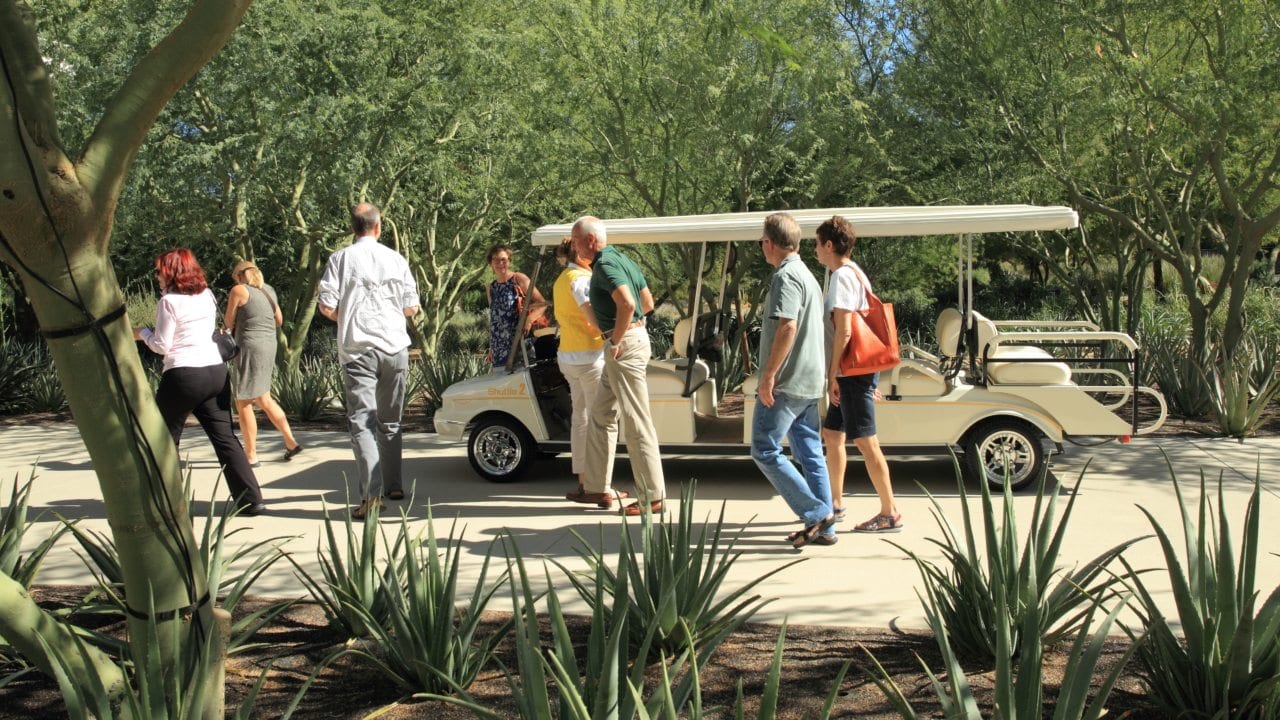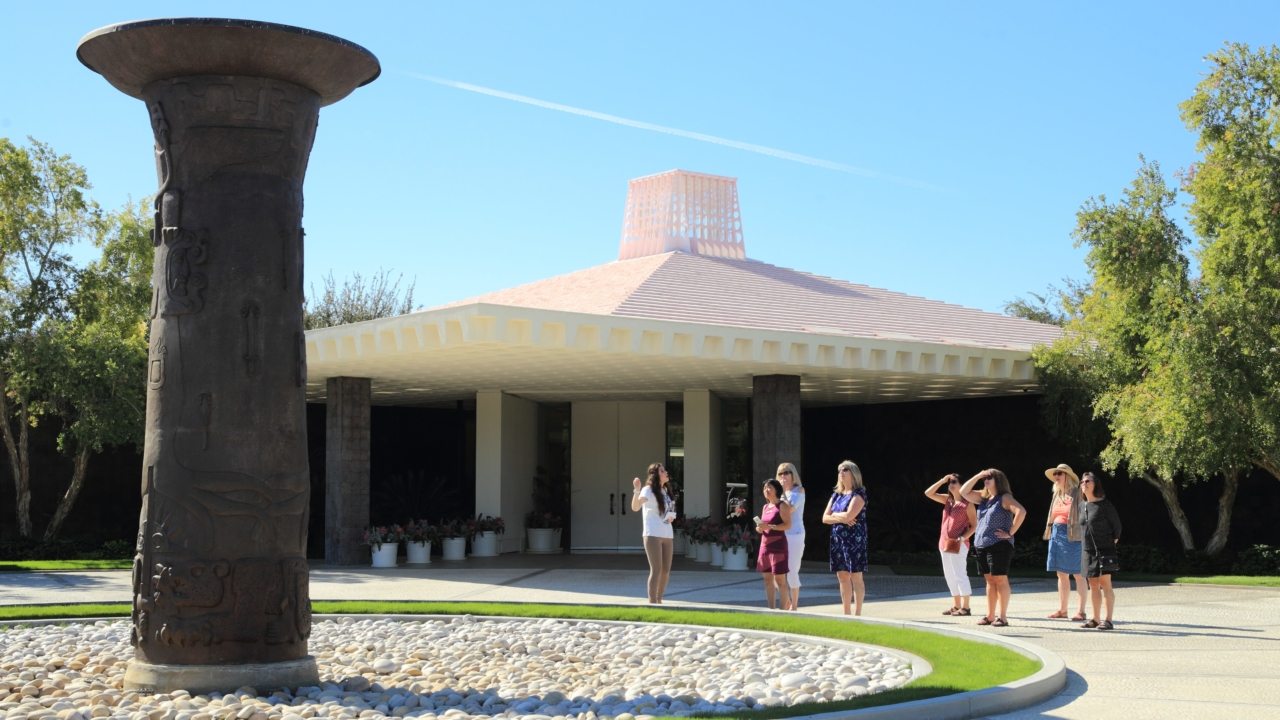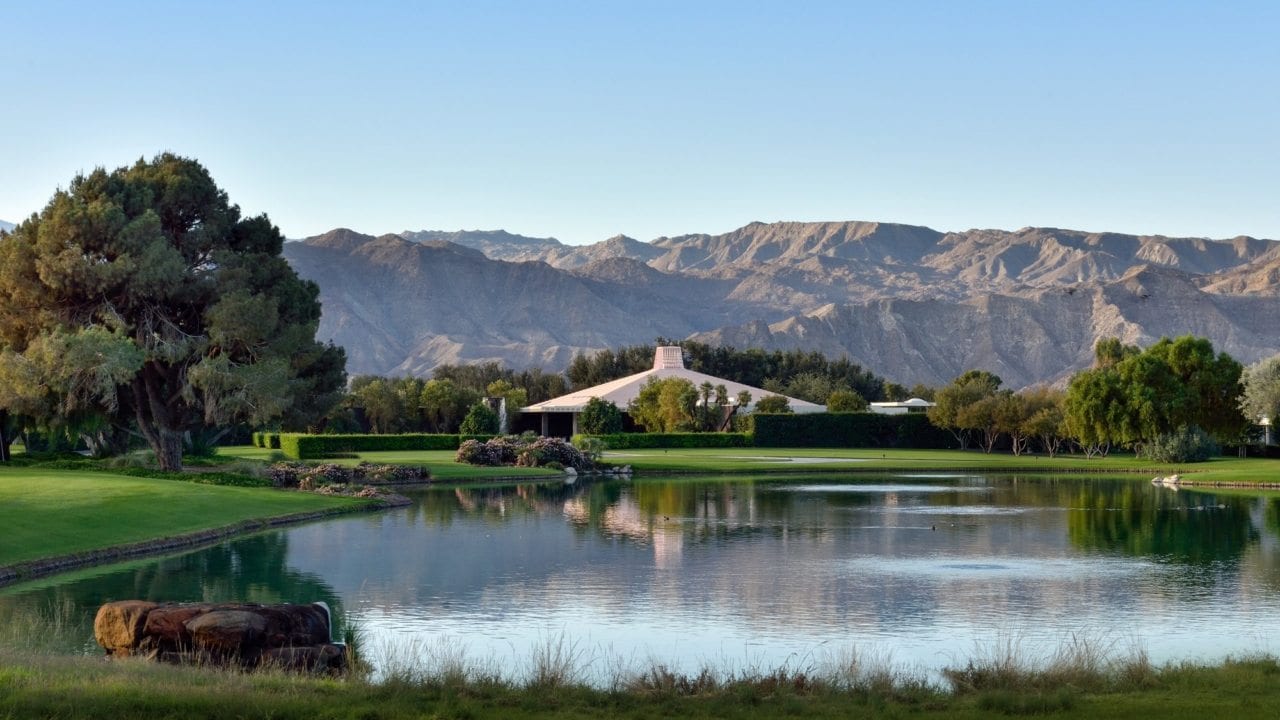Water conservation measures bring an array of new colors to Sunnylands grounds
January 30, 2015–In recent weeks, visitors to Sunnylands have eyed a vista far different from the one that has greeted them in winters past.
Complementing the soaring purple peaks of the San Jacinto Mountains, the golf course and surrounding grounds offer a rich tapestry of colors – greens, yellows, taupes and browns – that are the result of Sunnylands’ water conservation efforts, including a first-time decision not to overseed fairways to maintain a wall-to-wall carpet of green grass on the golf course.
That decision, by far, has produced the most dramatic results. The sweeping fairways, normally seeded with ryegrass to replace the Bermuda grass that goes dormant in winter, have sported tones of pale green, gold and yellow, contrasting sharply with the deep green of the ryegrass in the rough.
Additionally, in the patchwork of 60 acres where turf was removed in previous years, tan wood chips and stands of 6- to 8-inch high “tall grass” reside with trees to add a new, earthy color palette to the landscape.
“It adds depth of character. There is variation in color, in textures, now that we didn’t have before,” Sunnylands Director of Operations Pat Truchan said.
The changes, however, are not driven by aesthetics. They are a result of Truchan’s and golf course superintendent Drew Kerr’s efforts to conserve water on the 200-acre estate, a goal established by Sunnylands’ Board of Trustees.
Removing 60 acres of turf obviously lowers water consumption. Tall grass has been planted in some of these areas, where trees still require watering, to help stabilize the sand underneath. Wood chips, trimmings from the estate’s 6,000 trees, serve the same purpose.
But the decision not to overseed the fairways with ryegrass last fall is also a big water saver. If ryegrass seeds had been scattered, they would have had to remain wet to germinate. Currently, watering of fairways occurs once a week, and the use of fertilizer, labor and fossil fuels for mowing on fairways is eliminated until temperatures warm and the Bermuda grass reawakens.
Truchan and Kerr are still calculating the amount of water savings, but Truchan said Sunnylands used roughly 28 percent less water last year than what had been historically consumed each year, before construction of the Center & Gardens and before the estate was opened to the public.



